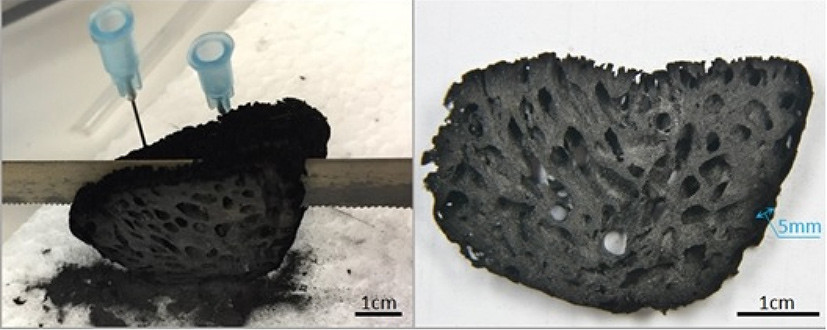Russian biologists and their foreign colleagues obtained graphite from the skeletons of sea sponges. This was reported in the journal Science Advances. The work was supported by the Russian Science Foundation.
Scientists from Germany, Poland, Slovakia, the USA and France took part in the project. The Russian side was represented by St. Petersburg State University, Syktyvkar State University, as well as ITMO University.
Scientists decided to create materials resistant to an aggressive environment based on natural structures that living organisms produced in the process of evolution. This direction in science is called biomimetics. To do this, they conducted an experiment on sea sponges, which over 600 million years of existence learned to create a skeleton the size of a centimeter to a meter and were able to survive a wide variety of natural disasters.
“Extreme biomimetics is a special scientific method in which scientists use the ideas of nature itself for their development. This science is engaged in the study of the natural processes of the formation of biomaterials in extreme conditions for humans and the study of biopolymers that are extremely resistant to temperature, pressure, acid or alkaline environments, with the goal of creating a new generation of composite materials, ”said one of the authors of the work, professor of the Embryology Department of St. Petersburg State University Alexander Yereskovsky.
- Spongin Carbonation Experiment
- © put.poznan.pl
Scientists conducted an experiment on the carbonization of spongin (a protein that is the main component of the skeleton of a sea sponge) - heated to 1200 ° C the skeleton of a sea sponge in an oxygen-free environment saturated with carbon dioxide. The remains of the body did not turn into coal dust: despite the loss of 70% of the volume, they retained their structure. The resulting material, still externally similar to a sea sponge, was already graphite - nanopore crystalline carbon with a very strong frame.
According to researchers, the resulting material is an ideal filter. It is able to purify water from harmful impurities, which can then be converted into non-toxic substances suitable for use in pharmaceuticals.
“Using an ordinary sponge, you can prepare an effective catalyst for the ecological purification of sea water, which naturally processes aggressive chemicals into neutral ones. The material is able to purify water from toxic substances, nitrophenols, and turn them into aminophenols, which are non-toxic and are used in the pharmaceutical industry, ”said Professor Yereskovsky.
Graphite created by scientists is a complex three-dimensional system with high porosity and resistance to acids. According to the researchers, the resulting material is an environmentally friendly product because of its organic origin. In addition, its production uses a renewable natural resource - the sea sponge.
- The resulting graphite retained the appearance of a sea sponge.
“Now that the problem of environmental pollution has become one of the main for the whole planet, the emergence of new materials is extremely important. Using spongin is economically feasible, as it is a natural, renewable and environmentally friendly resource that can be produced around the world. With proper management, the development of these technologies will not harm the marine animal population, and sponging materials can be used in various industries, ”the scientist concluded.

